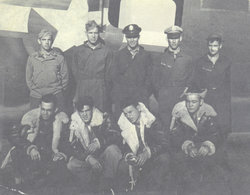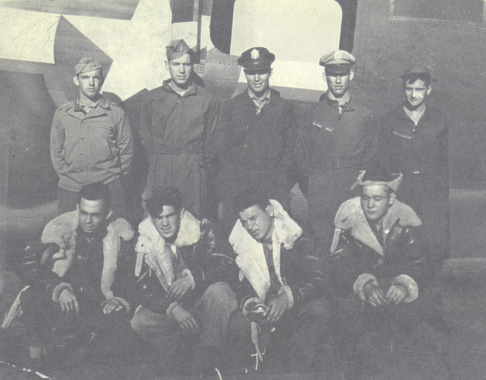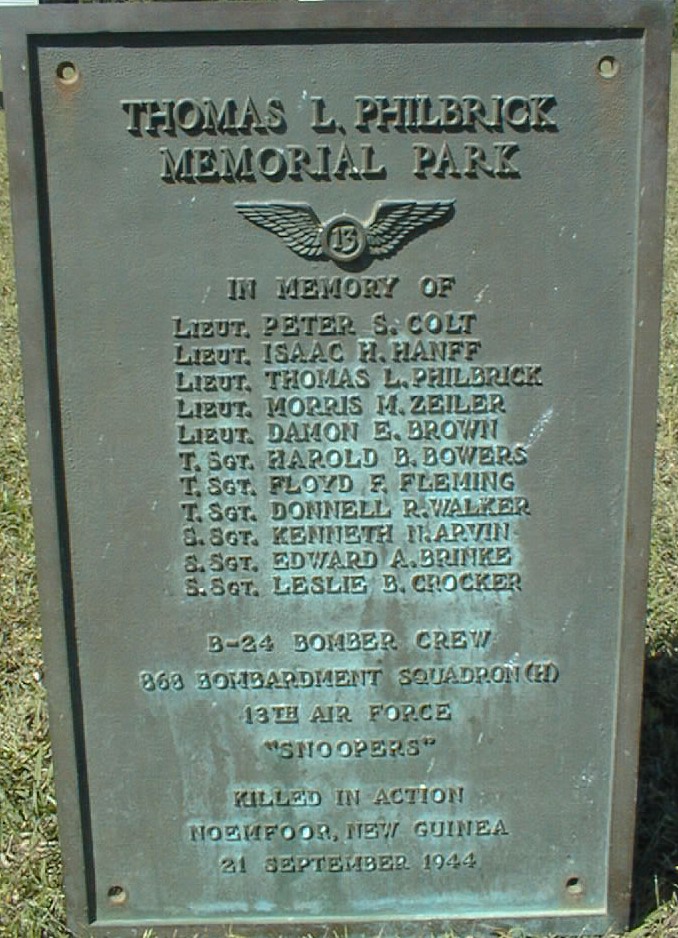Name: Isaac H Hanff
Inducted From: North Carolina
Rank: First Lieutenant
Combat Organization: 868th Bomber Squadron Heavy
Death Date: 21 Sep 1944
Monument: Fort William Mckinley, Manila, the Philippines
Last Known Status: Missing
U.S. Awards: Purple Heart Medal
Air Medal
Additional Army Awards
For Hanff, Philbrick and other men in the bomber squadron, their B-24's carried (what was at that time) a top-secret technology designed to help win the war – on board radar. Flying at night, the bombers of the 868th would take off alone to attack Japanese ships and land-based targets in the Pacific. In September of 1944, Lt Isaac Hanff, Lt Thomas Philbrick and their crew were on the front lines of the Pacific campaign to retake the Philippines.
As navigator, it was Thomas' job to plot the course that would take the plane to the target and back to base safely. On board his plane, radar operator Technical Sergeant Harold Bowers would use the radar to pin point possible targets for their B-24 to bomb. Each B-24 had several gunners to protect the craft from Japanese fighters. Manning two of those .50 caliber machine guns, were Gunners S/Sgt. Edward Brinke and S/Sgt Leslie Crocker. T/Sgt. Floyd Fleming (Engineer) would man the top turret guns. 1st Lt. Issac H. Hanff, the B-24's pilot, was working on getting his star above his wings that were pinned on his chest. Receiving the coveted Senior Pilot Wings required completion of 20 bomb runs with a Instructor Pilot on board. (Flight information adapted from information at philbrick-geneology.org
Name: Isaac H Hanff
Inducted From: North Carolina
Rank: First Lieutenant
Combat Organization: 868th Bomber Squadron Heavy
Death Date: 21 Sep 1944
Monument: Fort William Mckinley, Manila, the Philippines
Last Known Status: Missing
U.S. Awards: Purple Heart Medal
Air Medal
Additional Army Awards
For Hanff, Philbrick and other men in the bomber squadron, their B-24's carried (what was at that time) a top-secret technology designed to help win the war – on board radar. Flying at night, the bombers of the 868th would take off alone to attack Japanese ships and land-based targets in the Pacific. In September of 1944, Lt Isaac Hanff, Lt Thomas Philbrick and their crew were on the front lines of the Pacific campaign to retake the Philippines.
As navigator, it was Thomas' job to plot the course that would take the plane to the target and back to base safely. On board his plane, radar operator Technical Sergeant Harold Bowers would use the radar to pin point possible targets for their B-24 to bomb. Each B-24 had several gunners to protect the craft from Japanese fighters. Manning two of those .50 caliber machine guns, were Gunners S/Sgt. Edward Brinke and S/Sgt Leslie Crocker. T/Sgt. Floyd Fleming (Engineer) would man the top turret guns. 1st Lt. Issac H. Hanff, the B-24's pilot, was working on getting his star above his wings that were pinned on his chest. Receiving the coveted Senior Pilot Wings required completion of 20 bomb runs with a Instructor Pilot on board. (Flight information adapted from information at philbrick-geneology.org









